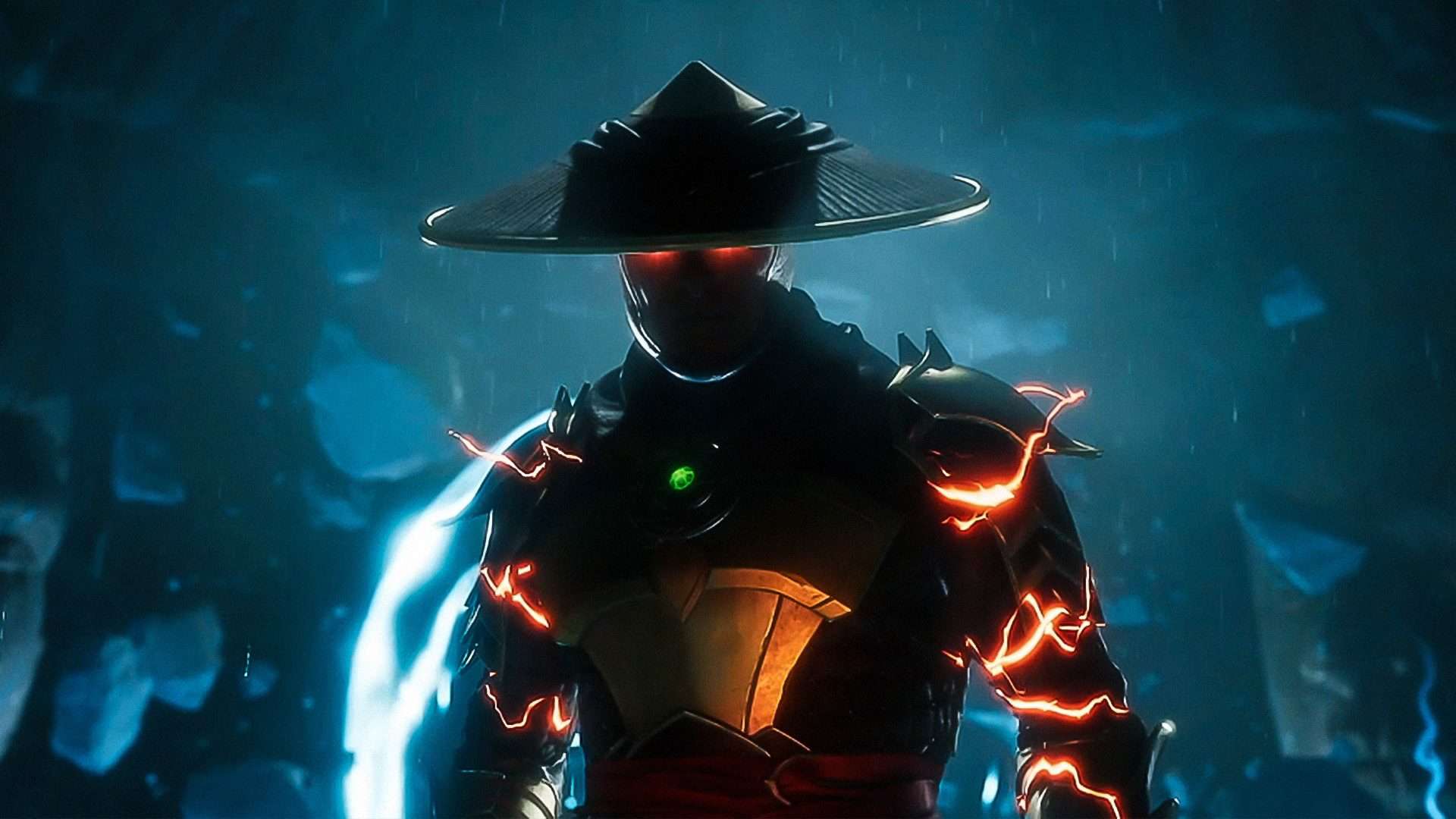Mortal Kombat is a franchise steeped in blood, gore, and an everlasting supply of adrenaline. I fondly remember playing the first few games, and then immersing myself into the franchise once more when the Mortal Kombat Kollection released on Steam. Since then, the franchise has been rebooted. In recent years, newer fighters entered the scene, outright replacing some series staples. As a result of this, I did not really play Mortal Kombat X until well after the launch cycle for Mortal Kombat XL. When I did get to it, however, it was pure unadulterated fighting enjoyment. Naturally, I have been hyped to the max for the latest instalment in the franchise: Mortal Kombat 11.
Mortal Kombat 11 is the latest foray into the unending “konflict” between the Realms of Men, and those surround it. NetherRealm Studios continues the story of Raiden, the God of Thunder and sworn protector of Earth Realm, and how he has been driven to great lengths to protect the realm from a greater evil. Mortal Kombat 11 thrusts the various champions we all know and love into an epic time travel adventure where a brand-new villain has shown herself. Does the sheer incredulity of the campaign extend through to the rest of the game? In this Vamers Mortal Kombat 11 Review, I go over the reasons why I certainly think it does.

Protect the Realms at all costs
If there is one thing NetherRealm can do well, it is story modes in fighting games. Not only were they responsible for the incredible adaptation of the Injustice comics, but they also nurtured and grew an epic and decade-spanning franchise out of what was essentially a game about blood and gore. Not only are the stories that they write good, but the studio also manages to create characters that people fall in love with. Characters that are, in some weird way, relatable. This is why the campaign mode in Mortal Kombat 11 serves as a proper send off to some characters while introducing new ones that are sure to become fan favourites. Especially as the franchise enters the next chapter of its lifespan.
Much like the more recent entries in the franchise, Mortal Kombat 11 game boasts a fun and interesting campaign mode. From the start, the game brings players up to speed with the current state of the universe: Raiden has grown into a very powerful being – one who will do anything to keep Earth Realm safe. In fact, he will go so far as to kill off opponents and resort to torture. In the past, he would always attempt to look for more humane solutions, those backed by a moral compass for good. His uncouth actions are not without consequence, however. By killing Shinnok, Raiden has changed the flow of time. He has altered fate in such a way, that it forced new character Kronika to step in and set things “right” (she is the first ever female supervillain in the franchise).

Kronika is strong. She is all-powerful. The mother of the gods and champions alike. She has the ability to manipulate time and to weave and alter it. In doing so, she is, by and large, the creator of fate, destiny, and everything in-between. Naturally, she finds Raiden’s actions disturbing and sets out to recreate time and a “New Era” of gods and men where Raiden does not exist.
From there, the story quickly evolves into one action-packed adventure where a much older Johnny Cage, Sonya, and their daughter, Cassie Cage, spearhead a strong military outfit that protects Earth Realm along with Raiden and the other champions of old.
Kronika’s time-manipulating abilities then bring together multiple timelines in an amalgamation of strength and wit. Champions are pulled from the very first tournament, bringing back characters that have long since been killed. Naturally, the younger versions of the characters still have the same motifs and reasons for joining the tournament as kombatants in the first place, all those years before. Similarly, you can expect the good guys to still be good, just very different compared to what players have grown used to over the years.

The ensuing battles see a now-allied (and much older) Sub-Zero and Scorpion work together with the likes of Eron Black and the Cages, while their younger versions – including Sub-zero’s brother, Noob Saibot – vie to take Kronika’s side in a bid to create a New Era.
Over the course of Mortal Kombat 11‘s twelve chapters, the story evolves into an all-out battle for the very existence of time. It is an incredible journey that not only redefines the characters that came before, but also the characters that they have become over the past decade. Action takes centrefold with a lot of laughs strewn throughout, and yes, copious amounts of gore. The story takes you to both past and present versions of various “ikonic” locations, such as the Krypts and the ill-fated tournament grounds first introduced in the original Mortal Kombat.
At first, I thought that the story moved too quickly. It certainly feels this way. However, upon completion, and after some reflection, it is only natural for it to begin where it does – directly after the events of the previous game. From there, players are met with around five to six hours of fighting game glory, and it is simply incredible.

We are all puppets of time
Seeing as NetherRealm has poured immense amounts of love and attention into Mortal Kombat 11‘s story, it may come as a surprise that the gameplay has also been crafted with the same amount of dedication. The game features a fully fledged practice mode, as well as the “Klassik” Tower Mode, and local and online multiplayer. Each of these modes have aspects that only serve to compliment the game instead of bringing it down with too much to do.
After you are done with practice and the campaign, the next step will undoubtedly be the Tower modes that Mortal Kombat 11 has on offer. Here, you can go on to take out various opponents in the Towers of Time. This offers several time-based challenges where you have to come out on top or die trying. There are also classic Towers, each of which features varying lengths and difficulties. As you take on these “Klassik” Towers, you will take on any number of opponents, from only three, all the way up to an endless amount of opponents, depending on the Tower that you choose. This is very similar to the Multiverse aspect featured in Injustice 2. In fact, it is pretty much exactly the same, sans super-powered DC characters!

A new addition, however, comes in the form of “konsumables”. These are essentially buffs and debuffs that you can activate during, or before matches. They can turn the tide in a close fight, or make it more difficult right from the start in order to give the computer-controlled artificial intelligence a handicap. Examples include a vampire buff where you sap the health of an opponent every time you hit them or vice versa. There are also konsumables that alter the way some maps work and include things like not being able to stand in one place or constant missile barrages on both you and your opponent. In order to “kraft” konsumables that you need, all you need to do is head to the Forge, which is found in the Krypt. They can also be bought and sold for a bit of “koin”.
Since you are headed to the Krypt, you can also stop by random spots in the Krypt to unlock random items for your “kombatants”. This is where the most controversial part of the game comes into play: loot boxes.

In order to purchase a loot box in Mortal Kombat 11, players need to have enough koin. Koin can either be bought for real money or be earned in-game. Naturally, taking the latter path will require a bit of dedication since koin does not come in large quantities. Regardless of how you procure the funds however, you are always guaranteed one or two items from these boxes. The items include skins, the konsumables I mentioned earlier, and other components used to craft even more skins and konsumables.
The skins earned here can be equipped via the customisation screen. Once there, players can alter pretty much everything about their favourite kombatants. Every kombatant has at least two slots for gear – a weapon slot and an aesthetic slot (which is usually for the headpiece or mask); while they also feature a wardrobe that changes the entire look of the character. Scrolling to the right, however, will reveal even more things that players can change, including adding or altering combos, activating flashy new unlockable Fatalities, Brutalities, and more.

While the customisation in Mortal Kombat 11 feels a tiny bit lacklustre compared to NetherRealm’s last fighting title, Injustice 2, I do appreciate how there are upwards of thirty unique skins for every kombatant. By the time that players have finished the campaign, they will have unlocked at least one or two additional skins, while the rest must be earned in the Towers of Time, or bought via the Krypt’s loot boxes. Skins also come with tiny bonuses to stats, such as doing extra fire damage for Scorpion or increasing ability lengths for time manipulating abilities such as the ones Gerras can pull off. Hardcore players can rest assured that these stat bonuses do not extend toward the multiplayer aspects of the game.
There is no denying that the online multiplayer part of the game is for those who seek to test their mettle with people all over the world. The multiplayer in Mortal Kombat 11 features a slew of comprehensive online modes. These include various matches for ranked play, casual play, and even private lobbies, all of which have their own rulesets that you can adjust and filter through.
Speaking of playing online, I can safely say that NetherRealm did not skimp here either. Unlike Injustice 2, where I felt that latency played a rather huge role in winning or losing an online match, I never had these issues with Mortal Kombat 11. Instead, if I lost, it was likely because I simply could not get up to par with the thousands of hardcore players out there.

It is never “all sunshine and roses” sweetheart
The great thing about going through the campaign, the various Towers, and even the multiplayer modes is that, regardless of what you are doing, you can be rest assured that you will be doing it in style. NetherRealm takes no shortcuts – all levels are incredible to play, and the characters and game modes are equally as fun.
Every level, regardless of what “era” it comes from and who currently reside there in the story, is phenomenal to experience. Just like Injustice 2, every level has its own subset of areas that players can access. Similarly, all levels feature highly detailed backdrops, with nearby objects and features that players can take advantage of. These include exploding barrels that you can throw at your opponent, weapons stacked together that you can use for X-Ray moves, and even flora such as cacti that you can grind your opponent’s face on for a little bit of damage.

The level of detail in Mortal Kombat 11 also extends to the incredibly choreographed and animated setpieces featured in the campaign. From Johnny Cage driving a huge tank, to a huge cyborg facility where Kronika and her goons are manufacturing entire armies out of once-living souls, players can expect a constant adrenaline-filled adventure.
It also helps that the fantastic backdrops are complemented by fast-paced, snappy move sets and animations when it comes to kombatants! To an uninitiated player, combos might seem challenging to pull off for one reason alone: it feels slow and sluggish. However, the reality is actually that the game is compensating for input lag that would otherwise make it seem like inputs are not being registered due to a number of reasons (such as latency, hardware restraints, wireless interference for controls and more). This implementation has been a mainstay for NetherRealm games for a few entries now. In fact, it has become such a cool feature that NetherRealm even decided to bake an option into the game where players can make it so that the game mimics online play when offline. It does this by creating deliberate input lag which is usually a millisecond or so if players want to get used to authentic online play, even when playing offline.

Mortal Kombat 11 is the best in the franchise
Mortal Kombat 11‘s loot box controversy is not without its merits. With that said, I have to admit that I never felt the need to buy anything with real-world money, and neither did I feel like the game actively encouraged me to do so. The whole take away about it all for me is that, as long as it feels like it is fair and items are not unnecessarily rare to come by, I do not mind at all. Vamers purchased our review copy of the game from retail at launch, and I have to admit that I went into the game with a tiny bit of a worry about it. Thankfully, I ended up enjoying it far more than I thought I would.
From the incredible animation that complements the outstanding visuals, it seems that Mortal Kombat 11 really has it all. This also includes a full-fledged campaign, with twelve epic chapters that will keep you busy for at least five hours. When this is done, you can spend five more in the Towers of Time, another five in the Klassic Towers, and then an indefinable amount in the various multiplayer modes. The game is immensely enjoyable, and is excellent for any fighting game fan, and even more so for anyone who played and enjoyed previous instalments in this franchise. It is, for all intents and purposes, the ultimate Mortal Kombat experience.
| Hours to Complete | 10 Hours |
| Difficulty | Normal |
| Platform | Windows PC (Steam) |
| Acquisition | Review copy purchased at retail |
Mortal Kombat 11
R889Pros
- Perfect mix of old and new characters
- Action packed campaign
- Beautiful visuals
- Various games modes ensures countless hours of gameplay
Cons
- Campaign could be a little longer
- Because its too short
- Obviously
- Too much greatness too little time, you know
- There are a gazillion other things to do though
Junior Editor at Vamers. From Superman to Ironman; Bill Rizer to Sam Fisher and everything in-between, Edward loves it all. He is a Bachelor of Arts student and English Major specialising in Language and Literature. He is an avid writer and casual social networker with a flare for all things tech related.























